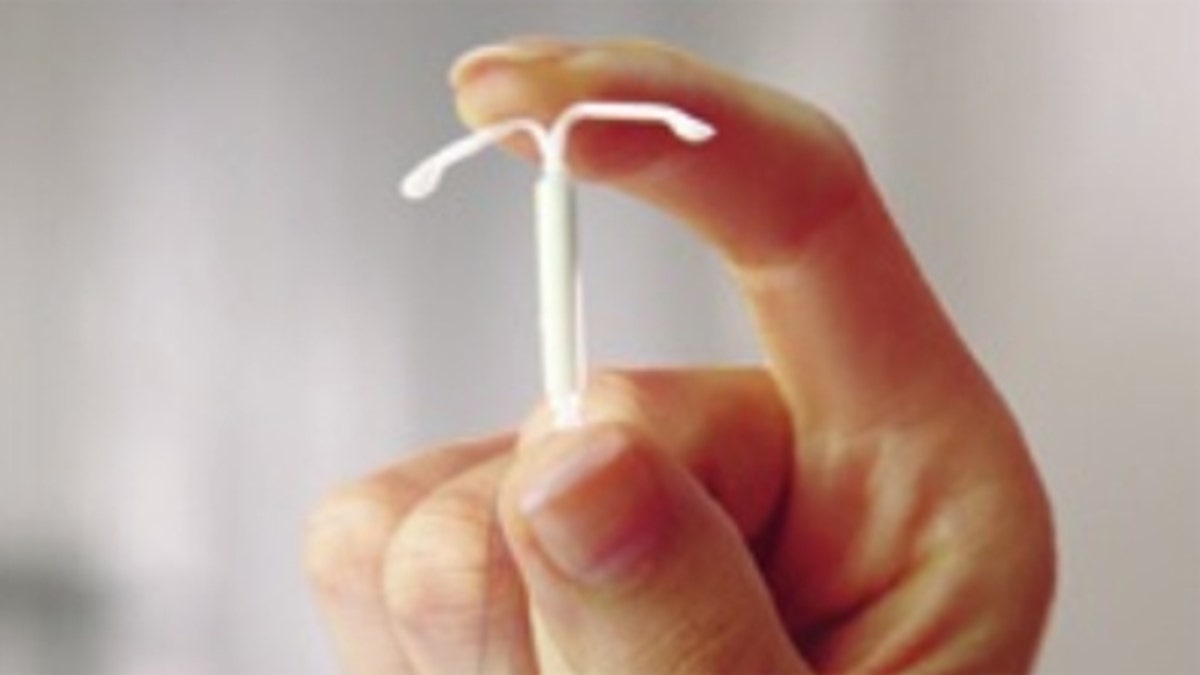
(Mirena.com)
A report released Monday by the American College of Obstetricians and Gynecologists says that long-acting reversible contraceptive (LARC) methods—specifically intrauterine devices (IUDs) and implants—are the safest and the most effective contraceptive for all reproductive-age women.
IUDs are small T-shaped devices, which are inserted by a doctor into the uterus to prevent pregnancy. One type is the copper IUD, which emits a small amount of copper into the uterus to prevents fertilization by interfering with sperm and also stops a fertilized egg to attach to the uterine wall. The copper IUD is effective for up to 10 years. The second type is the hormonal IUD, which releases the hormone progestin into the uterus to prevent pregnancy for up to five years.
The contraceptive implant is a matchstick-sized rod that is inserted under the skin of the upper arm and releases a controlled amount of an ovulation-suppressing hormone for up to three years—and is the most effective reversible contraception available with a pregnancy rate of 0.05 percent, according to the report.
IUDs and implants are only available in a doctor’s office.
Dr. Manny Alvarez, senior managing editor of Fox News Health and head of Obstetrics and Gynecology at Hackensack University Medical Center, said he agrees with the report, but said precautions need to be taken before deciding on an implant or device.
“IUD’s do give a significant degree of protection to prevent pregnancy,” he said. “They still are invasive and they do have potential side effects, like infection. Sometimes these infections are unknown because the patient doesn’t have any symptoms. It could cause damage to the reproductive organs, especially the fallopian tubes.”
Another side effect for women using a copper IUD is increased menstrual bleeding and cramping for the first few months, which is the main cause of discontinuation among users. Alvarez said there are additional, more serious side effects.
“One of the leading causes of infertility for women is Chlamydia—and whether it is here in the U.S. or around the world its is pervasive, it is sexually transmitted and can lead to the obstruction of the fallopian tubes but also causes chronic inflammation and it may be just as significant in preventing women in getting pregnant,” he said.
Alvarez said women thinking about an IUD or implant should discuss the potential risks with her doctor.
“Even though IUDs—especially in the last 10 years or so—have proven to be quite effective, doctors need to take a long, hard look at who uses them and account for the risk of infertility,” Alvarez said.
According to The College, more than half of women who have an unplanned pregnancy were actively using contraception, but were inconsistent. LARCs have the highest continuation rates of all reversible contraceptives because of their low maintenance.
“LARC methods are the best tool we have to fight against unintended pregnancies, which currently account for 49 percent of U.S. pregnancies each year,” said Dr. Eve Espey, co-author of the report, said in a press release.“The major advantage is that after insertion, LARCs work without having to do anything else. There’s no maintenance required.”
Fewer than six percent of U.S. women who use a form of birth control choose the LARC method despite the benefits, according to The College, and say that the cost and lack of knowledge may be to blame.
“Women need to know that today’s IUDs are much improved from earlier versions, and complications are extremely rare. IUDs are not abortifacients—they work before pregnancy is established—and are safe for the majority of women, including adolescents and women who have never had children. And while upfront costs may be higher, LARCs are much more cost-effective than other contraceptive methods in the long run,” Espey said.
